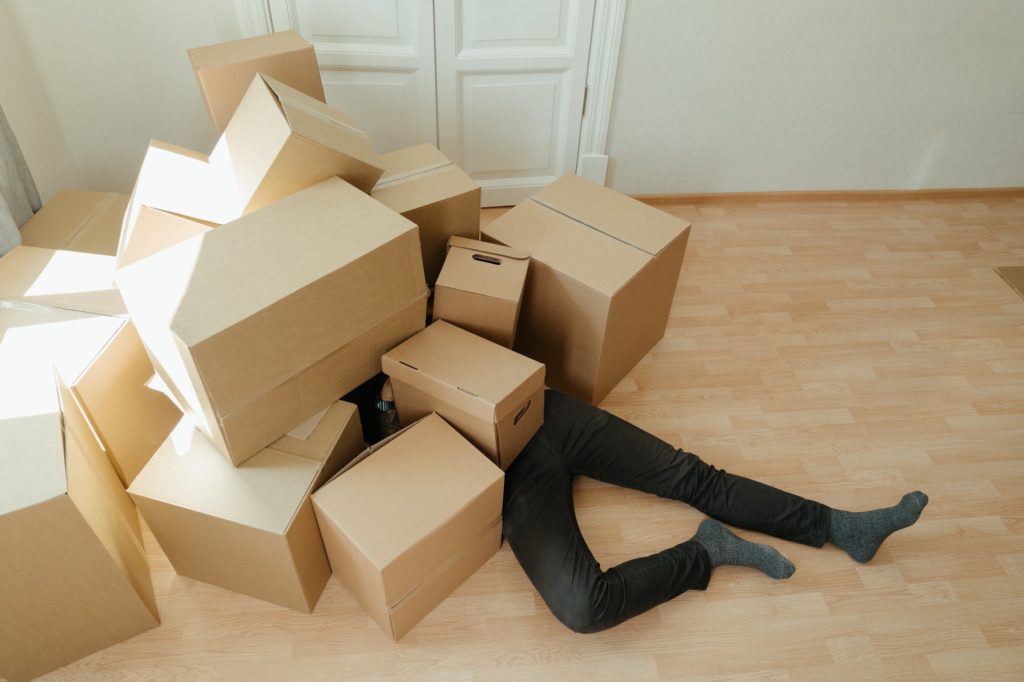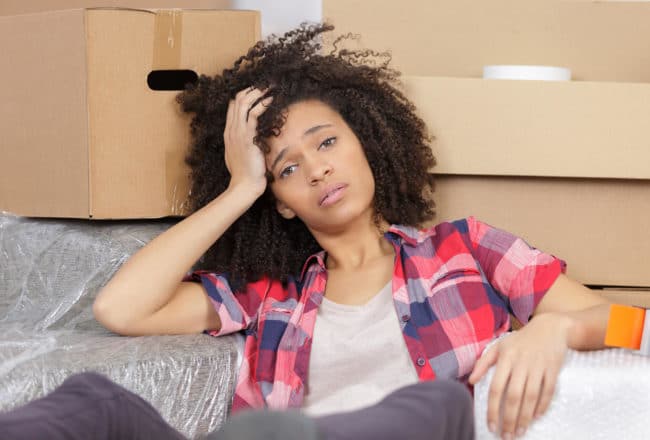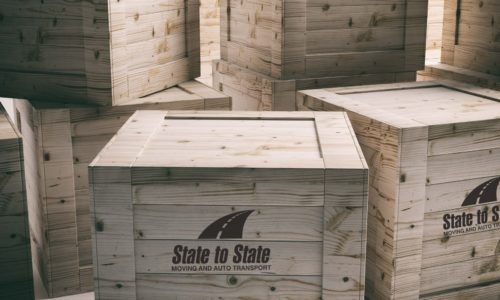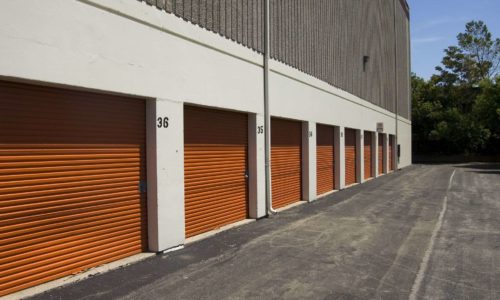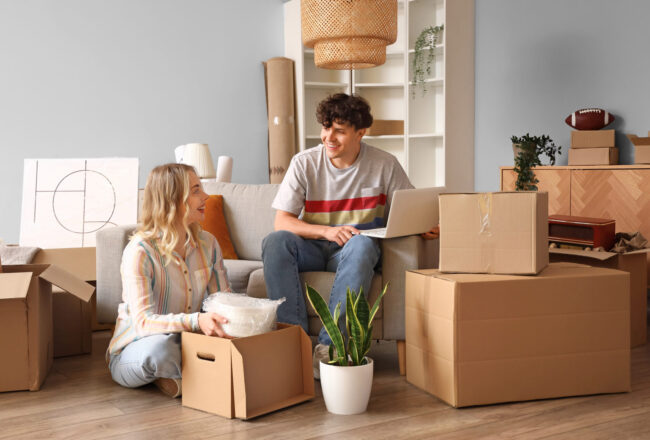When embarking on a journey of moving interstate, one of the pivotal questions that often arises is: “How many moving boxes do I need?” The process of moving state to state can be both exciting and overwhelming, requiring meticulous planning and organization. Determining the right quantity of moving boxes is a crucial aspect of this process, as it directly impacts the efficiency and cost-effectiveness of the move.
When relocating cross-country, estimating the number of boxes depends on factors like home size, belongings, and specialized needs. Understanding various box sizes and their uses aids in efficient packing. Hiring professional movers minimizes stress. Prioritize safe packing with proper weight distribution.
Factors Affecting the Number of Moving Boxes Needed
When estimating how many boxes to move, several key factors come into play, each contributing to the overall volume and complexity of your relocation. By carefully considering these factors, you can develop a more accurate assessment of the quantity of materials needed, ultimately streamlining the transportation process.
Size of Your Home
The size of your current residence is perhaps the most apparent determinant of how many boxes will be necessary. A larger home with multiple bedrooms and extensive living spaces is likely to contain a greater volume of possessions, leading to a higher demand for material. Conversely, a smaller apartment may require fewer boxes. It’s important to take stock of every room and area, from the attic to the basement, to ensure you have an accurate understanding of the scope of your belongings.
Household Composition
The composition of your household also plays a pivotal role. Families with children, for instance, tend to accumulate a diverse range of items due to the various needs and interests of each family member. Consequently, families often require more items compared to single individuals or couples. Children’s toys, clothing, and other accessories contribute to the overall volume. Understanding your household’s composition and its impact on your belongings is essential.
Lifestyle and Accumulation
Your lifestyle and accumulation habits significantly influence the number of boxes necessary. Minimalists who prioritize simplicity and possess fewer possessions might need significantly fewer boxes than individuals who tend to accumulate a multitude of items over time. Packrats, on the other hand, could find themselves needing an abundance of boxes to accommodate their collection of belongings. Evaluating your personal style of living and the extent to which you accumulate possessions will aid in estimating box quantities more precisely.
Specialty Items
Certain items in your possession may require specialized packaging due to their fragility, size, or unique characteristics. Artwork, delicate glassware, valuable antiques, and electronic devices are prime examples. These items often necessitate a specific box design to provide adequate protection during the relocation. Incorporating the need for a special box into your calculations ensures that your most valuable and fragile items are safeguarded throughout the journey.
In conclusion, the box number needed for long-distance moving is influenced by a combination of factors. These include the size of your home, the composition of your household, your lifestyle and accumulation tendencies, and any specialty items requiring specialized packaging. By analyzing these factors comprehensively, you can determine a more accurate estimate of the quantity required, enabling you to approach your relocation with better preparation and confidence.
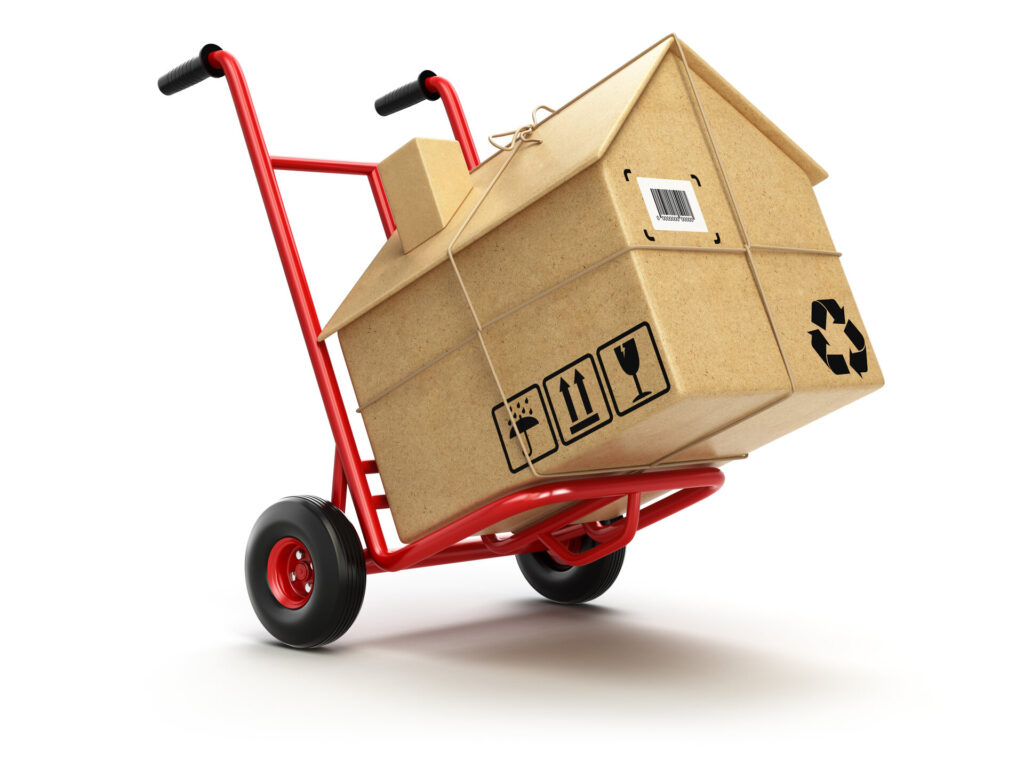
How Many Moving Boxes Do I Need – Understand the Different Sizes and Their Uses
When determining the number of boxes required when moving state to state, it’s essential to not only consider the factors influencing the overall quantity but also to understand the different sizes available and their specific uses. Utilizing the right box for each type of item ensures optimal protection and efficient packing, streamlining the relocation process and reducing the risk of damage during transit.
Small Boxes (Book Boxes)
A small box, often referred to as a book box, is designed to hold dense and heavy items. These are ideal for packing items like books, CDs, DVDs, and other compact, weighty belongings. Their smaller size makes them manageable to carry and prevents overloading, ensuring the safety of both your items and those handling the items.
Medium Boxes
A medium-sized box serves as a general-purpose container suitable for a variety of items. From toys and kitchen utensils to small appliances and electronics, this type of box offers versatility in packing. Their moderate size strikes a balance between accommodating a range of belongings while still maintaining a manageable weight for lifting and transport.
Large Boxes
A large type of box is tailored for accommodating lightweight yet bulky items such as bedding, curtains, clothing items, and other soft, voluminous belongings. While they can hold a significant volume of items, it’s important to avoid packing them with excessively heavy contents, as this can make them difficult to handle and increase the risk of breakage.
Wardrobe Boxes
Wardrobe boxes are a unique solution for packing hanging clothes, costumes, and draperies. They are equipped with a metal bar that allows you to hang clothes directly, mimicking the setup of a closet. This eliminates the need to fold and pack hanging garments, preserving their condition and saving time on ironing and reorganizing at your new home.
Dish Pack Boxes
Packing dishes, glassware, and other fragile items requires special care during a relocation. A dish pack box is specifically designed to provide extra protection for breakable belongings. It often features dividers or foam inserts to prevent items from shifting and colliding, reducing the risk of damage.
Picture or Mirror Boxes
Artwork, mirrors, and glass tabletops necessitate specialized packaging to prevent breakage. Picture and mirror boxes are designed to offer sturdy protection for these delicate items. They typically come in adjustable sizes, allowing you to accommodate various dimensions of frames, mirrors, and glass surfaces securely.

General Guidelines Based on Home Size
Estimating how many boxes will I need to move can be simplified by considering the size of your current residence. While individual circumstances vary, general guidelines based on the number of bedrooms can provide a useful starting point for gauging your box needs. These estimations help you plan your relocation more effectively, ensuring you have the necessary packing materials to transport your belongings securely.
It’s important to note that these estimations provide a general starting point and can vary based on individual circumstances, including the size of your furniture, the quantity of personal items, and your specific packing style. To get a more precise estimate, it’s recommended to take inventory of your belongings, assess the volume of each room, and consider any specialty items that may require additional boxes.
Studio or 1-Bedroom - Estimated Range of Boxes Needed
For smaller living spaces like studios and 1-bedroom apartments, you can generally expect to require around 20 to 40 moving boxes. These spaces tend to have a more modest collection of belongings, including furniture, kitchenware, clothing, and personal items. Keep in mind that the estimate of how many boxes for a 1 bedroom apartment can fluctuate depending on your accumulation habits and the specific items you own.
2-Bedroom - Estimated Range of Boxes Needed
If you’re moving from a 2-bedroom apartment or house and wondering how many boxes will I need to move a 2-bedroom apartment, you should know that it typically involves a slightly larger volume of belongings. As such, preparing around 40 to 60 moving boxes should cover your packing needs. This range accommodates not only furniture and basic household items but also takes into account the increased number of rooms and potentially shared spaces.
3-Bedroom - Estimated Range of Boxes Needed
A 3-bedroom home often signifies a more extensive array of possessions accumulated over time. Preparing approximately 60 to 80 moving boxes is a reasonable estimate for this home size. This range accommodates a larger number of bedrooms, additional living spaces, and the associated furniture and belongings.
4-Bedroom and Above - Estimated Range of Boxes Needed
Larger homes with four bedrooms or more necessitate a more comprehensive packing strategy. To adequately pack and transport items from these spacious residences, you might need around 80 to 120 moving boxes or more. The increased square footage, number of rooms, and varied possessions contribute to the need for a larger quantity.
Other Packing Supplies to Consider
Here is a checklist of all the additional packing supplies you will need:
- Protection paper – An essential tool for wrapping fragile items, packing paper provides a protective layer to prevent damage during transit.
- Bubble wrap – A reliable solution for safeguarding delicate belongings like electronics and glass items, bubble wrap’s cushioning properties absorb shocks and impacts.
- Packaging tape – Ensure each box stays securely closed with tape, maintaining the integrity of your items throughout the move.
- Markers – Labeling each box with markers helps you easily identify its contents and the intended room, streamlining the unpacking process at your new home.
- Stretch wrap – Perfect for bundling and protecting larger items and furniture pieces, stretch wrap keeps items securely in place and minimizes shifting in the relocation truck during transport.
Tips for Reducing the Number of Boxes Needed
When planning a cross-country relocation, minimizing the box number required not only simplifies the packing process but also saves you time, effort, and, potentially, costs. Employing efficient packaging strategies can significantly reduce the volume of items you need to transport, making your move easier and more manageable.
Declutter Before the Move
Before packing a single box, take the opportunity to declutter your belongings. Go through each room and assess items you no longer need, use, or have an attachment to. Donate, sell, or get rid of these items responsibly. By downsizing your possessions, you’ll not only reduce the number of boxes needed but also create a more organized and clutter-free living environment in your new home.
Use Existing Storage
Make use of the storage spaces you already have, such as suitcases, duffel bags, and bins. Utilizing these items to pack clothes, linens, and other soft items reduces the need for additional boxes. Utilize travel luggage for packing, and consider sliding smaller items into gaps within larger furniture pieces. This approach maximizes available space and minimizes the number of boxes required.
Bundle Items
Group similar items together and bundle them using items you already own. For example, use towels, linens, and blankets to wrap and protect fragile items instead of using extra packaging materials. Place smaller kitchen items inside larger pots and pans, creating a space-saving nesting effect. By creatively combining items, you can efficiently use your possessions as protection materials.
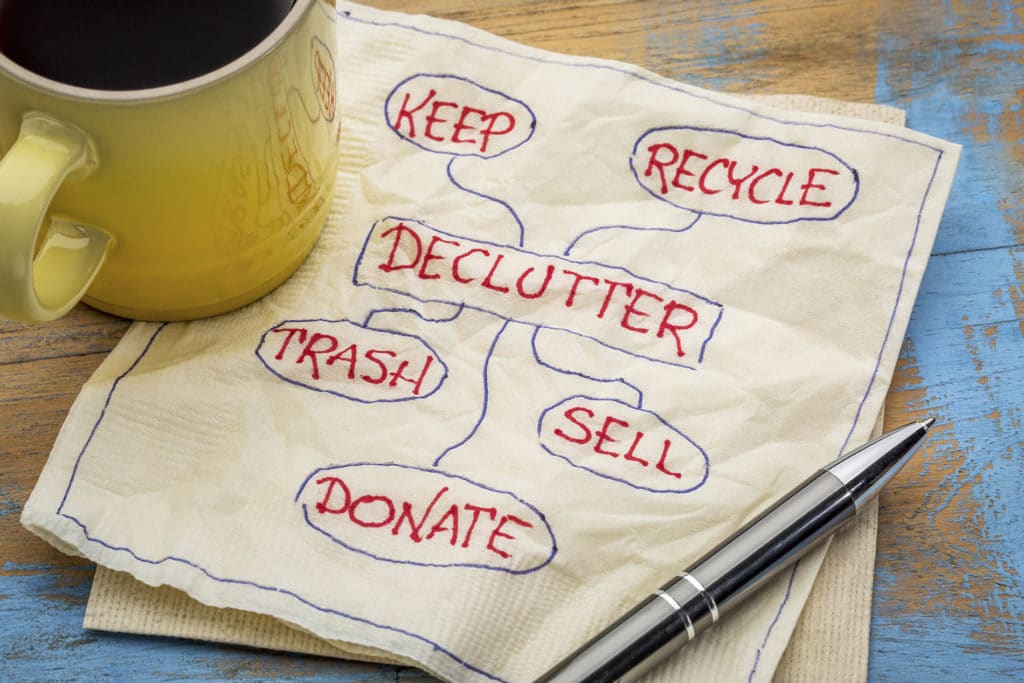
Hire Professional State to State Movers and Avoid Stressing About Boxes
When it comes to tackling the logistics of a cross-country move, one of the most effective ways to alleviate the stress of estimating and handling a multitude of boxes is to hire professional movers. These experienced professionals not only bring their expertise in packing and transporting your belongings safely but also offer tailored solutions to ensure a seamless and efficient relocation.
By entrusting your move to skilled movers and their moving services, you can focus on other aspects of your transition and have confidence that your possessions will be packed, labeled, and handled with care. So, contact us at State2State Movers, and allow our movers to do all the heavy lifting. With our packing services, you can avoid the complexities of box calculations and instead look forward to a smooth and stress-free journey to your new home.
FAQ
Do I Really Need Specialty Boxes Like Wardrobe or Dish Pack Boxes?
Specialty boxes like wardrobe or dish pack ones are designed to provide extra protection for specific types of items. While not always necessary, using them can greatly reduce the risk of damage to delicate or valuable possessions during the relocation.
Can I Use Regular Boxes for Fragile Items or Electronics?
Yes, you can use a regular box for fragile items and electronics, but it’s recommended to provide extra padding and protection with materials like bubble wrap, packing paper, and foam inserts to ensure their safety during transit.
What Are the Top Ways to Reduce the Number of Boxes I Need?
To reduce the box number, declutter your belongings, utilize existing storage like suitcases, and bundle items together creatively.
Is Decluttering Before the Move Recommended?
Yes, decluttering before a relocation is highly recommended. It helps you minimize the number of items you need to pack, streamlining the relocation process and potentially lowering costs.
How Can I Ensure I’m Packing Boxes Safely to Avoid Damage or Injuries?
Pack heavy items at the bottom, use proper cushioning for fragile items, avoid overloading boxes, and securely tape and seal them to prevent accidents and damage.
What’s the Recommended Maximum Weight for a Packed Box?
A general guideline is to keep them under 50 pounds to ensure they can be lifted and moved safely without risking injury.
Are Second-Hand Boxes Safe and Reliable for Moving?
If in good condition, they can be safe and reliable. However, ensure they’re sturdy, without damage or excessive wear. You can even get free boxes on sites like Craigslist.
How Can I Ensure My Move Is as Environmentally Friendly as Possible?
To ensure an environmentally friendly relocation, opt for eco-friendly packaging materials like biodegradable peanuts and recycled paper. Rent plastic containers to minimize waste. Donate or recycle items you no longer need, reducing the load to transport. When unpacking, recycle each cardboard box and reuse or repurpose materials whenever possible.
Can I Use Items in My Home, Like Suitcases or Baskets, as Substitutes for Boxes?
Yes, using suitcases, baskets, and other containers you have at home can be a great way to reduce your box needs.
How Should I Label My Boxes for the Best Unpacking Experience?
Label boxes with a brief description of contents and the room they belong to. Consider color-coding or numbering for further organization.
What Should I Do With My Boxes After I’ve Unpacked?
After unpacking, you have several options for your used boxes. Recycling is environmentally responsible – many recycling centers will accept cardboard box. Alternatively, consider passing them on to others who might be relocating soon, offering them through online platforms or local community groups. You can also repurpose them for storage or future use.
Are There Companies or Organizations That Will Take My Used Moving Boxes?
Yes, there are companies, organizations, and local recycling centers that often accept used boxes. Some relocation companies might offer box recycling programs, while recycling centers and local community groups may also be interested in taking your used boxes. Additionally, you can check online platforms or social media groups where people often offer or seek out free relocation supplies. Always ensure each box is in good condition before offering it for reuse or recycling.

